Bandera Drilling pushes safety with new-generation rig
By Linda Hsieh, assistant managing editor
If Bandera Drilling had a motto for its new-generation ST-12,000 rigs, it could well be: “Nobody in the derrick, nobody on the rig floor, nobody in harm’s way.”
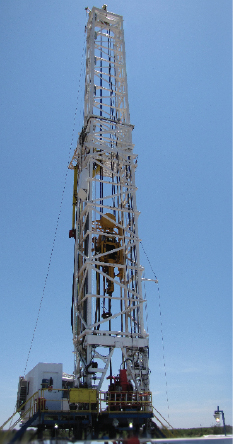
For both tripping and connection operations, that’s a claim only a handful of US land rigs can make. And for Abilene, Texas-based Bandera, it’s been a vision of president Ray Brazzel’s that took nearly three years to fully realize.
It began with the simple notions that the derrick and drill floor are two of the most dangerous locations on a rig, and that advanced-technology machines, not humans, could and should be doing the heavy and dangerous work in a drilling operation.
However, Mr Brazzel didn’t want to just dress up old rigs with new machines. He wanted to create a new generation of rigs that would bring technological innovations to the industry and pave the way to a new level of safety and performance.
“We had some ideas about this before 2006. When we sold our old rigs (in 2006), that allowed us some flexibility to do new things. We immediately started talking to different people about building a new-concept rig – one that got people out of harm’s way,” Mr Brazzel recalled.
After extensive design and engineering, done in cooperation with several suppliers, significant capital investments and a rig-up in Bandera’s own Texas yard, Rig 9 was completed earlier this year as the first in the ST-12,000 design series. It is a variable-frequency drive AC-powered rig that can drill up to 15,000 ft and was built specifically to meet the horizontal drilling needs of operators in areas like the Barnett Shale.
Most of the equipment for Rig 9 were engineered and built specifically for Bandera.
For example, International Derrick Service designed and built a derrick that would pick up and lay down pipe like a singles rig but has the capacity to rack triple joints of pipe. It comes with a 500,000-lb hookload. The overall compact design of the derrick and substructure also allows the 15,000-ft capable Rig 9 to fit in the same location as Bandera’s double rigs that are only 8,500-ft capable. The new triple rig can also rig up and down in one day for fast mobilization.
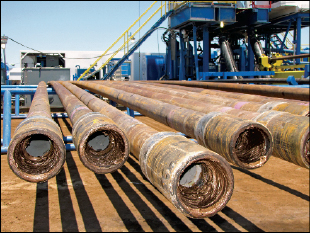
The 1,200-hp drawworks from Rig Tech was also designed specifically for this rig and uses a 436 WCSB Eaton airbrake and hydraulic disc brakes both with a closed-loop cooling system and powered by a 1,150-hp AC motor.
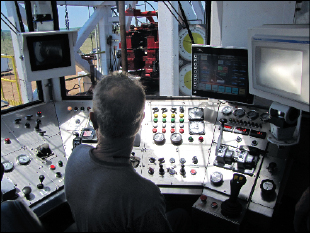
To achieve the high degree of mechanization that was required to achieve Mr Brazzel’s vision – remember, that’s no one in the derrick or on the drill floor, tripping or connections – a top drive and an iron derrickman were key. Rig 9 uses a 275-ton, 600-hp AC top drive.
The Iron Derrickman was test-driven on a double rig with satisfactory results before being installed on the triple rig. This is a racking board-mounted pipe-handling system that eliminates the need for personnel on the monkeyboard during tripping operations.
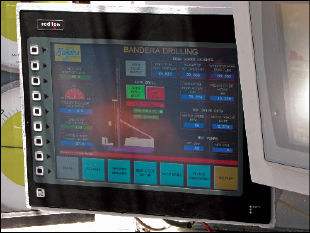
Jim Jones, business unit manager for Weatherford’s Iron Derrickman product group, explained that only a very small percentage of the US land fleet currently have automated pipe rackers. The fact that Bandera has been willing to invest in the equipment in order to improve safety is a true testament to Mr Brazzel’s commitment.
All phases of the rig are operated from the climate-controlled driller’s cabin.
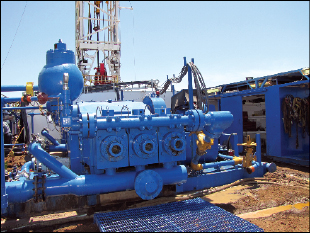
“Mr Ray Brazzel is one of those people that puts his money where his mouth is. In other words, he’s very committed to his people,” Mr Jones said. He invested in mechanized pipe-handling equipment “because he saw it as an area where he could really contribute to his employees’ lives.”
Among other enabling technologies on the new rig are the pipe arm and iron floorhand. The pipe arm delivers pipe to the well center for connections and eliminates stacking pipe in the V-door and mouse hole. The iron floorhand is a relatively new, remotely operated system that replaces the pipe spinner, Kelly spinner and manual tongs. Mr Brazzel noted that Gray Oil Tools built the prototype of the iron floorhand specifically for Bandera. It was tested on other Bandera rigs before being implemented on Rig 9.
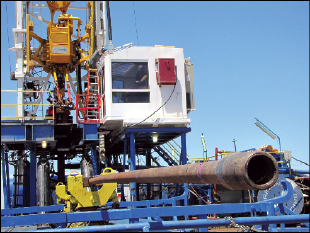
Another unique feature of the ST-12,000 design to improve safety is an auxiliary rig control located on the ground-level platform. It puts both the control and the driller in close proximity to the blowout prevention equipment, which reduces risks of miscommunication during nipple-up. It also comes in handy when slipping and cutting the drilling line because the driller will be next to the drum. “You don’t need a flagger or anyone else to give you directions because you can see what’s going on,” Mr Brazzel said.
The top drive (above, left), Iron Derrickman (above, middle) and iron roughneck (above right) do much of the dangerous work on Rig 9, reducing the risk of injury for crews.
Rig 9 has drilled six wells since May 2009 and is now on its seventh well. The last three wells have been horizontals. One drilled in Stephens County, Texas, for Delta Oil & Gas and two in Fisher County for Halliburton Operating.
Bandera is in the process of building a second rig with the new design, with most of the components built and ready to go. “Depending on market conditions, hopefully we’ll have it out before the end of the year. If the market picks up, we can build some more,” Mr Brazzel said.
 |
 |
 |
| The top drive (above, left), Iron Derrickman (above, middle) and iron roughneck (above right) do much of the dangerous work on Rig 9, reducing the risk of injury for crews. | ||
Bandera Drilling also operates three double rigs that are capable of drilling up to 8,500 ft. A closer look at Bandera’s rigs is available at www.banderadrilling.com.
[youtube RmgZD8uERdo]
This video shows Bandera Drilling’s Rig 9 making a connection.
[youtube OOwoix7h44E]
This video shows Bandera Drilling’s Rig 9 performing tripping operations.
[youtube inwEiBRGGaQ]
Drilling Contractor publisher Mike Killalea interviews Bandera Drilling’s president Ray Brazzel in Breckenridge, Texas at the site of Bandera’s Rig 9.




